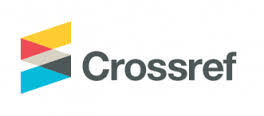The Degree of Employing Artificial Intelligence Applications in the Management of Inclusive Education from the Point of View for Teachers of the First Three Grades in Mafraq
DOI:
https://doi.org/10.59759/educational.v3i4.847Keywords:
Artificial Intelligence Applications, Inclusive Education Administration, Mafraq GovernorateAbstract
The study aimed to identify the degree of employment of artificial intelligence applications in the management of inclusive education from the point of view of teachers of the first three grades in Mafraq. The study sample consisted of (109) female teachers who teach the first three grades in government schools in Mafraq Governorate in the academic year 2023/2024 AD. The researcher used the descriptive survey method, relying on the questionnaire prepared by the researcher to achieve the goal of the study. The results showed that there is a moderate degree of employing artificial intelligence applications in the management of inclusive education in the schools of Mafraq Governorate, and that there are no differences in the degree of employing artificial intelligence applications in the management of inclusive education from the point of view of teachers of the first three grades in Mafraq due to the educational qualification variable. In light of this, the study presented a set of recommendations, the most prominent of which is the inclusion of artificial intelligence applications in the training programs to prepare teachers of the first three grades to raise their efficiency and increase the degree of their possession of basic skills in managing inclusive education through artificial intelligence applications.
Downloads
References
Edzii, A. A. (2017). Decentralised educational planning: A case study of two districts in Ghana (Doctoral dissertation, University of Sussex).
Magulod Jr, G. C. (2017). Factors of school effectiveness and performance of selected public and private elementary schools: implications on educational planning in the Philippines. Asia Pacific Journal of Multidisciplinary Research, 5(1), 73-83.


